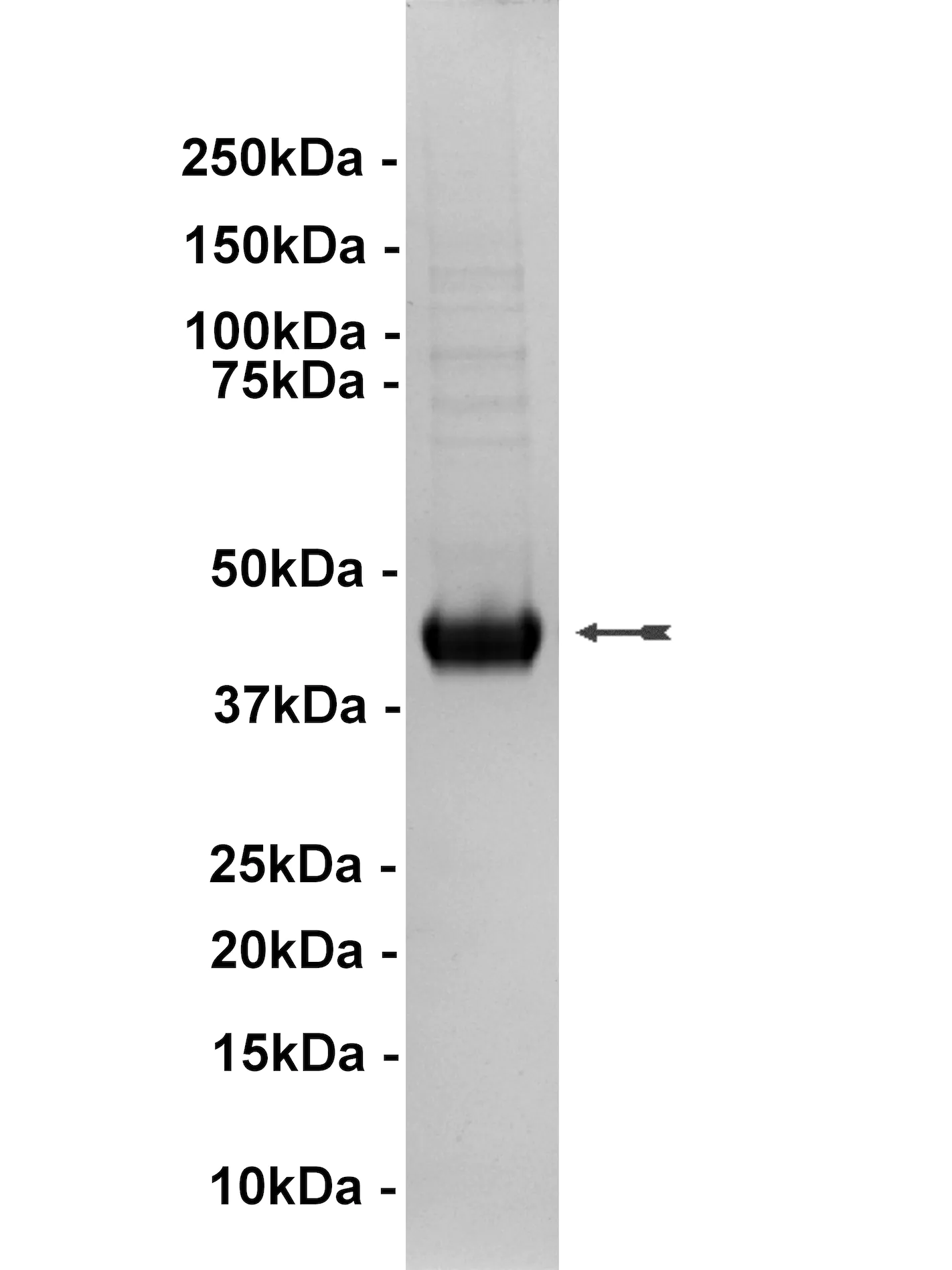JNK1α1/SAPK1c, active
N-terminal 6His-tagged recombinant, human full length JNK1α1/SAPK1c.
Biological information
Background
c-Jun N-terminal kinases (JNKs), a stress-activated protein kinase (SAPK), is involved in cellular responses to environmental stresses. JNK kinases can be activated by stimuli such as UV light, radiation, protein synthesis inhibitors, ceramide, DNA-damaging drugs, chemopreventive drugs, TNF-a, and interleukin 1. JNK binds to an NH2-terminal region of ATF2 and c-Jun and phosphorylates two sites within the activation domain of each transcription factor. Three JNK genes (Jnk1, -2 and -3) have been identified in humans; however, splice variants result in a total of 10 isoforms. Therapeutic inhibition of JNK may provide clinical benefit in disease as diverse as immune inflammatory (joint, bowel, pulmonary), ischemic injury (brain, cardiac) and neurodegenerative (Alzheimer’s, Parkinson’s) diseases.
EMBL L26318
Target class
Kinase
Family
CMGC
Accession number
NM_002750.2; NM_139046.1; NM_139047.1; NM_139049.1
Target Name
JNK1α1/SAPK1c, active
Target Alias
MAPK8, JNK1, JNK21B1/2, PRKM8, JNK-46, JNK, SAPK1, JNK1A2
Origin
Human
Theori. MW
45 kDa
Affinity tag
6His
Product specifications
Expression system
Expressed by baculovirus in Sf21 insect cells
Purity
Refer to CoA for Purity
Purification method
Ni2+/NTA-agarose
Sample Buffer
Specified activity
Refer to CoA
Application
For Research Only
Storage conditions
1 year at -70°C
Usage disclaimer
For Research Only
Chemical data
Background
c-Jun N-terminal kinases (JNKs), a stress-activated protein kinase (SAPK), is involved in cellular responses to environmental stresses. JNK kinases can be activated by stimuli such as UV light, radiation, protein synthesis inhibitors, ceramide, DNA-damaging drugs, chemopreventive drugs, TNF-a, and interleukin 1. JNK binds to an NH2-terminal region of ATF2 and c-Jun and phosphorylates two sites within the activation domain of each transcription factor. Three JNK genes (Jnk1, -2 and -3) have been identified in humans; however, splice variants result in a total of 10 isoforms. Therapeutic inhibition of JNK may provide clinical benefit in disease as diverse as immune inflammatory (joint, bowel, pulmonary), ischemic injury (brain, cardiac) and neurodegenerative (Alzheimer’s, Parkinson’s) diseases.
EMBL L26318
Compound name
Kinase
Catalog number
14-327
Molecular formula
CAS
MW
Ka
Percent composition
Product specifications
Physical state
Purity (HPLC 214nm)
Retention time (RP18 HPLC)
CMC
Exact mass
Stability
For Research Only
Solubility structure
Datasheets
14-327
Datasheet





